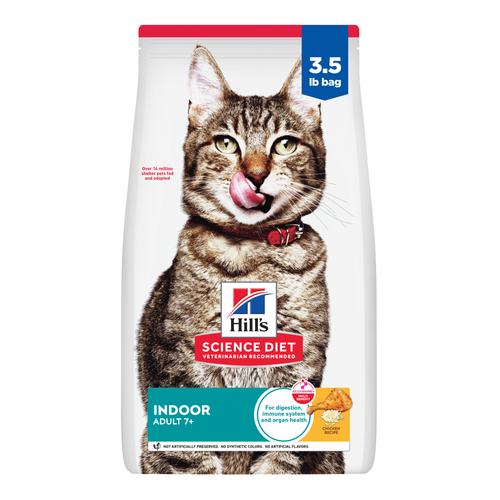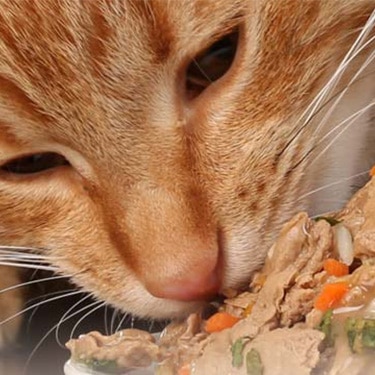

Ever wonder how a street cat with a broken leg can manage not only to survive, but to also look graceful loping across the street? Maybe you've even had a cat who broke a leg and marveled at how they managed to hide their pain so effectively. They're so good at surviving accidents and illnesses that even a cat with an untreated broken leg can look almost normal, even immediately after sustaining this kind of injury.
Humans would be laid up for weeks, but our four-legged friends aren't so genetically removed from their wild ancestral lineage, which means they have more appropriate biological tools when it comes to managing pain. This explains how a cat with an untreated broken leg can recover almost uneventfully, hunting and scavenging in spite of even the most devastating limb fracture.
Causes of Limb Fractures in Cats
It might sound obvious, but trauma is the number one reason cats break (or fracture) their limbs. Common types of trauma include:
- Vehicular trauma: This is perhaps the most common cause of feline fractures.
- Bite wounds: Dog bites, in particular, are a common explanation for broken extremities.
- Bullet, arrow, slingshot or pellet gun injuries: Projectiles can easily fracture limbs.
- High-rise syndrome: This term refers to what happens when cats fall from heights, typically off balconies and rooftops. Falling from heights often can (but not always) result in fractured limbs.
- Household injuries: Plenty of household appliances and furniture offer opportunities for fractures. Reclining chairs, in particular, are a common source of limb fractures in cats.
Nevertheless, there are plenty of non-traumatic health complications that can predispose limbs to breaking:
- Poor nutrition: A cat who suffers from nutritional deficiencies that weaken their bones may be more susceptible to broken limbs.
- Infections: Certain infections can affect joint integrity or limb strength, making fractures more likely.
- Metabolic diseases: Problems like diabetes and excess weight are risk factors for fractures.
- Parathyroid disorders: The hormone that regulates a cat's minerals such as calcium, phosphorus, and vitamin D (all which play a role in a cat's bone formation) is called the parathyroid hormone. When these minerals are decreased, they can lead to abnormalities of the bones, which can lead to a greater risk of fracture.
- Cancer: Even cancer can play a role, as cancerous bones are susceptible to breakage.
Diagnosing a cat with a broken leg is cause for taking all of these possibilities into consideration.
How to Tell if a Cat Has a Broken Leg
Typically, a cat with an untreated broken leg will show symptoms like noticeable limping. The limb may sometimes dangle as they walk, but some may bear weight on the limb if the fracture doesn't render the leg unstable.
Cats are known for hiding their pain well, so the signs may be easily missed unless you know what to look for. Stress hormones serve to alleviate some of this pain and, as previously noted, cats are masters at hiding pain; this makes sense given that any sign of weakness makes cats a target for predators.
Swelling and damage to the skin may be a factor in some cases, too. A large swelling, an unnatural angle to the limb and blood or discoloration at the site of injury can be giveaways. An "open" fracture is one where the skin has been affected near the injury, which can lead to infections if left untreated.
Hiding behavior is also common in a cat with a broken leg. Hunkering down to give healing a chance to occur is a survival mechanism. A normally social cat may be more prone to distancing behavior or even aggressive behavior if they are trying to mask pain.
Diagnosis & Treatment
Broken limbs may seem easy to diagnose, but it often takes sedation and an X-ray for definitive results. Sure, a veterinarian can somtimes feel a fresh fracture, but a cat with an untreated broken leg may have been healing for weeks before their veterinary visit.
Moreover, some fractures are highly stable and relatively minor. That's why X-rays are always indicated if fractures are considered a possibility.
Each fracture is unique and should be treated as such. Treating a cat with a broken leg differs depending on the severity of the injury and whether the fracture is "open" or "closed." Antibiotics and surgery are always indicated for an open fracture.
Further, fractures can be "displaced" or "nondisplaced." Comminuted, displaced fractures often require surgery to stabilize them (plates, pins or other hardware required), whereas simple, nondisplaced fractures may heal well with splinting alone. If surgical fixation is required, a board-certified veterinary surgeon is often the best option.
Unless the fracture is long-standing and well-healed, pain relief is always in order. In the short term, pain medication typically includes anesthetics and opioids, particularly if surgery is required. Longer term, anti-inflammatory pain medications and neuromodulating medication (such as gabapentin and amitriptyline) can be employed to offer comfort and aid healing.
In some severe cases, amputation is the best option — this is often the least painful and most humane approach. If this is your veterinarian's recommendation, fear not, cats are actually very resilient and learn to adapt to life with the missing leg. Soon they start acting like their old self again, just now with a few more limitations.
Home Care for a Cat With a Broken Leg
Restricted mobility, often cage rest, is considered essential for optimal healing. If surgery took place, incision care is also required. Pain medication and antibiotics may need to be administered orally and/or transdermally. A recovery collar and splint replacement may be necessary. Follow-up visits to confirm healing are also required.
It may sound daunting, but don't panic — you can do this! Cats heal exceedingly well — both emotionally and physically.
The Role of Nutrition in Limb Fractures
Nutrition is crucial to help keep cats' bones in optimal condition and to prevent fractures in the first place. Cats whose calcium and phosphorus intake are out of balance are especially susceptible to limb fractures. Aftercare of limb fracture patients requires a delicate nutrient balance. That's why feeding all cats feline-specific food that is properly balanced is so crucial. Moreover, it's also important to recognize that cats recovering from trauma need not be exposed to further stress by changing their food or feeding schedule.


















